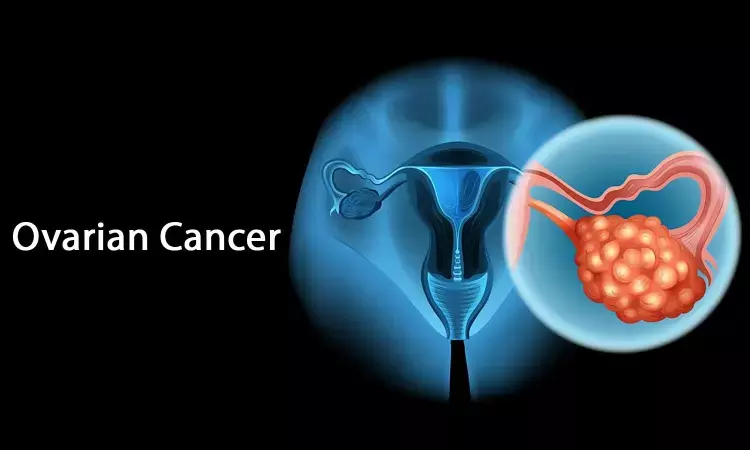- Home
- Medical news & Guidelines
- Anesthesiology
- Cardiology and CTVS
- Critical Care
- Dentistry
- Dermatology
- Diabetes and Endocrinology
- ENT
- Gastroenterology
- Medicine
- Nephrology
- Neurology
- Obstretics-Gynaecology
- Oncology
- Ophthalmology
- Orthopaedics
- Pediatrics-Neonatology
- Psychiatry
- Pulmonology
- Radiology
- Surgery
- Urology
- Laboratory Medicine
- Diet
- Nursing
- Paramedical
- Physiotherapy
- Health news
- Fact Check
- Bone Health Fact Check
- Brain Health Fact Check
- Cancer Related Fact Check
- Child Care Fact Check
- Dental and oral health fact check
- Diabetes and metabolic health fact check
- Diet and Nutrition Fact Check
- Eye and ENT Care Fact Check
- Fitness fact check
- Gut health fact check
- Heart health fact check
- Kidney health fact check
- Medical education fact check
- Men's health fact check
- Respiratory fact check
- Skin and hair care fact check
- Vaccine and Immunization fact check
- Women's health fact check
- AYUSH
- State News
- Andaman and Nicobar Islands
- Andhra Pradesh
- Arunachal Pradesh
- Assam
- Bihar
- Chandigarh
- Chattisgarh
- Dadra and Nagar Haveli
- Daman and Diu
- Delhi
- Goa
- Gujarat
- Haryana
- Himachal Pradesh
- Jammu & Kashmir
- Jharkhand
- Karnataka
- Kerala
- Ladakh
- Lakshadweep
- Madhya Pradesh
- Maharashtra
- Manipur
- Meghalaya
- Mizoram
- Nagaland
- Odisha
- Puducherry
- Punjab
- Rajasthan
- Sikkim
- Tamil Nadu
- Telangana
- Tripura
- Uttar Pradesh
- Uttrakhand
- West Bengal
- Medical Education
- Industry
Photodynamic therapy useful option for treating metastatic ovarian cancer

Scientists at Kazan Federal University and Medical Center of the Presidential Administration of Kazakhstan have found that Photodynamic therapy is a useful treatment option for metastatic ovarian cancer.
Photodynamic therapy (PDT) is a minimally invasive therapeutic modality used for the treatment of a variety of cancers and benign diseases. It is one of the most promising methods of treating localized tumors. PDT can be used for treatment in almost all major locations as an independent method or in combination with traditional types of treatment (surgery, radiation, and chemotherapy). Depending on the stage, nature and form of tumor growth, various laser irradiation options have been developed to increase the effectiveness of photodynamic therapy.
The method is based on the introduction of photosensitizers into the patient's body that selectively accumulate in the tumor tissue. The main idea of this method is to produce singlet oxygen and other active radicals to destroy tumor cells.
In addition to the direct phototoxic effect on tumor cells, in photodynamic therapy, an important role in the destruction mechanism is also played by a reduction in the blood supply to the tumor tissue caused by damage to the endothelium and blood vessel thrombosis, and cytokine reactions caused by stimulation of the production of tumor necrosis factor, interleukins, activation of macrophages and leukocytes.
The results of clinical and preclinical trials prove that PDT can be used in many types and localizations of tumors.
A quarter of a century has passed since the beginning of widespread clinical use of photodynamic therapy in Russia, but clear and unambiguous treatment recommendations are not yet available. Limited possibilities of using photodynamic therapy as a part of high-tech medical care program and high costs of photosensitizers in most cases are the obstacles to the full implementation of the method in cancer centers.
A potential direction for the development of this technique is the search for new photosensitizers and the expansion of indications for the use of PDT. A patent for fluorescent diagnostics of parathyroid tumors has already been obtained, and clinical trials are planned to study the effectiveness of PDT in a number of new locations of malignant tumors (bladder cancer, primary and metastatic liver cancer, localized and disseminated melanoma, etc.)
For more details click on the link: http://dx.doi.org/10.1007/s12668-020-00749-7
Hina Zahid Joined Medical Dialogue in 2017 with a passion to work as a Reporter. She coordinates with various national and international journals and association and covers all the stories related to Medical guidelines, Medical Journals, rare medical surgeries as well as all the updates in the medical field. Email: editorial@medicaldialogues.in. Contact no. 011-43720751
Dr Kamal Kant Kohli-MBBS, DTCD- a chest specialist with more than 30 years of practice and a flair for writing clinical articles, Dr Kamal Kant Kohli joined Medical Dialogues as a Chief Editor of Medical News. Besides writing articles, as an editor, he proofreads and verifies all the medical content published on Medical Dialogues including those coming from journals, studies,medical conferences,guidelines etc. Email: drkohli@medicaldialogues.in. Contact no. 011-43720751


